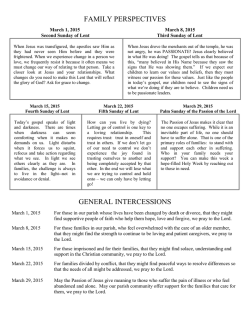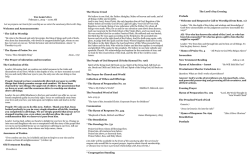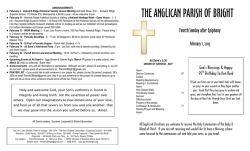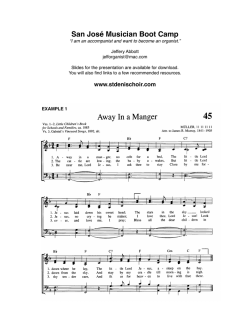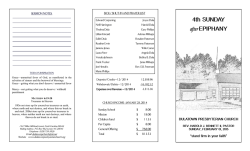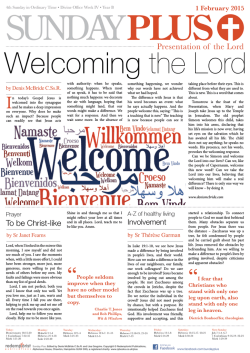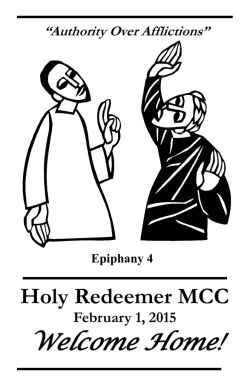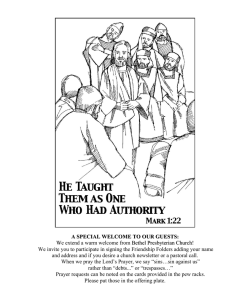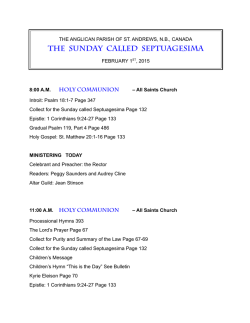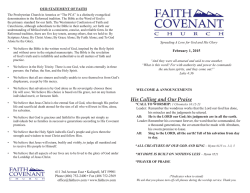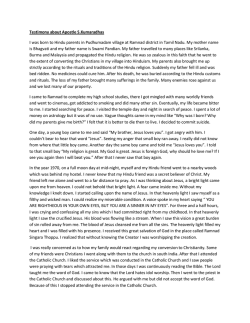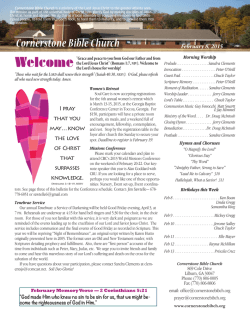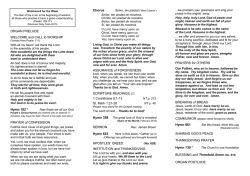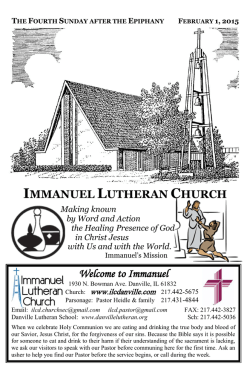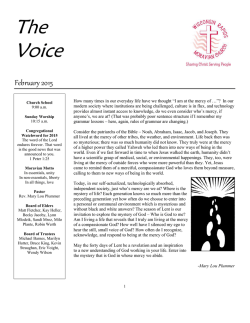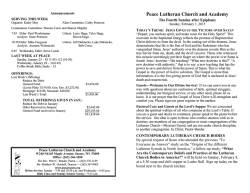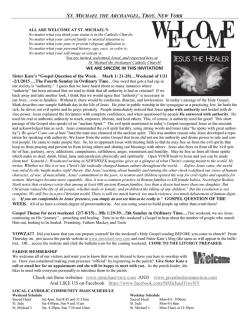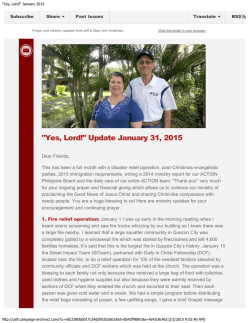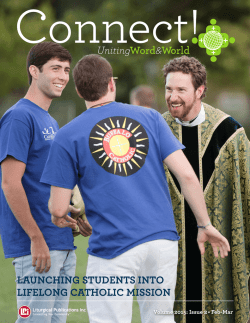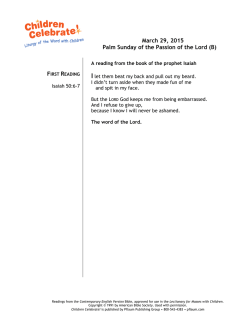
Year B, Ordinary Time- 5th Sunday, Feb 08, 2015
Liturgy of the Word with Children 5th Sunday in Ordinary Time, Year B 8th February 2015 Mark 1:29-39 Catechist Background As is typical of the Gospel of Mark, we are presented with a very no-frills account of occurrences in Jesus’ ministry. There are clues to deeper meaning in the text. It would have been unusual for Peter’s mother-in-law to be living with him; generally, wives moved in with their husband’s family, and so the fact that he has responsibility for his mother-in-law indicates that she has no living husband or adult son or other closer relative to look after her. In a group-oriented society, to have no family was a dire situation, and to have to live with your son-in-law would have brought a certain degree of shame. Jesus’ frees her from her fever as well as her lowly position and she begins to wait on the household guests, a dignified position for a woman in a household. Health and life has been restored to her so she may live with a purpose. In the second portion of today’s gospel, Jesus continues to cast out evil spirits. The crowds misunderstand him at this point; they are still excited by his miracles but fail to recognise that the reason he came was to preach repentance and belief. His fan club will desert him when they see that Jesus’ mission embraces suffering and crucifixion. Setting the Scene For the activity, you will need a banner and paint. You may also wish to have old t-shirts for children to wear and a basin of soapy water nearby. We Say Sorry Leader: You bring healing to those who are troubled, Lord have mercy. All: Lord, have mercy. Leader: You cast our sadness away, Christ have mercy. All: Christ, have mercy. Leader: You restore our relationship with you, Lord have mercy. All: Lord, have mercy. Gloria We Pray (1) God, watch over us, your family, and keep us safe in your care. Amen. Gospel Acclamation Gospel: Mark 1:29-39 Reflecting on the Reading with Children • Why do you think that Peter’s mother-in-law was living at his house? (The children do not need to know all of the social norms for the period. It will be enough for them to recognise that she was no longer independent and able to look after herself.) • • What does she do when Jesus heals her? If you were very ill and had not got out of bed for a few days and someone came and healed you, what is the first thing you would do? (Try to guide the children to see that the mother-in-law’s waiting on Jesus is a form of thanks and praise.) • How do we show our thankfulness and praise to other people? How do we show our thankfulness and praise to God? Response Make a brightly coloured banner showing praise to God. It does not have to be neat; some of the most authentic praise is often extremely untidy. If your space allows, consider splashing bold colours of paint on in a zany celebration of God’s love for us. We Believe Relating to the creed what you have shared with the children, ask this series of questions and invite the children to reply, ‘I do.’ • Do you believe in God the Father who created us to glorify God? • Do you believe in Jesus, God the Son who restores us so we can praise God? • Do you believe in God the Holy Spirit who moves us to worship God with our lives? We Pray (2) Again, try to relate the bidding prayers to the reading by saying, ‘Jesus healed people 2000 years ago and we offer him the needs of the world today…’ Leader: We pray for all Christians to be a caring example to the world. Lord in your mercy, All: Hear our prayer. Leader: We pray for all doctors, nurses, and people who work to improve people’s health. Lord in your mercy, All: Hear our prayer. Leader: We pray for people who have nobody to care for them. Lord in your mercy, All: Hear our prayer. Leader: We pray for anyone we know who is ill. Lord in your mercy, All: Hear our prayer. Leader: Lord, help us to be like Peter’s mother-in-law. Help us to serve you in all that we do so that all people will know your love. We make all our prayers through Christ our Lord. All: Amen.
© Copyright 2025
